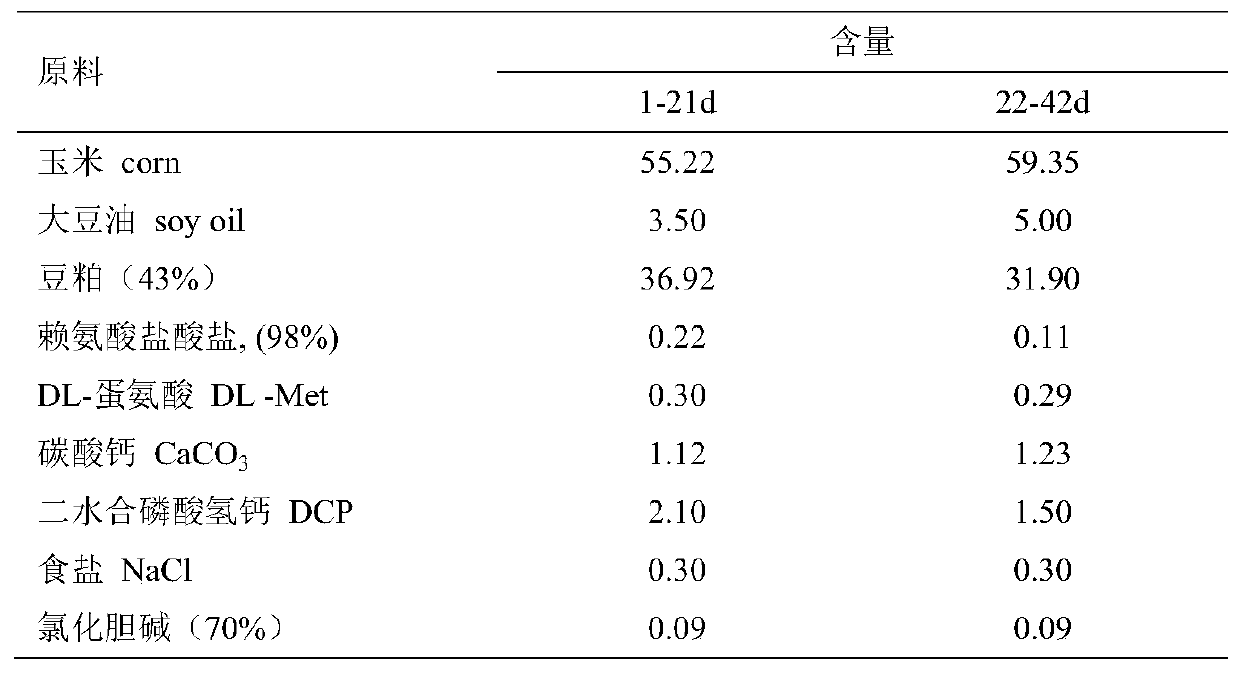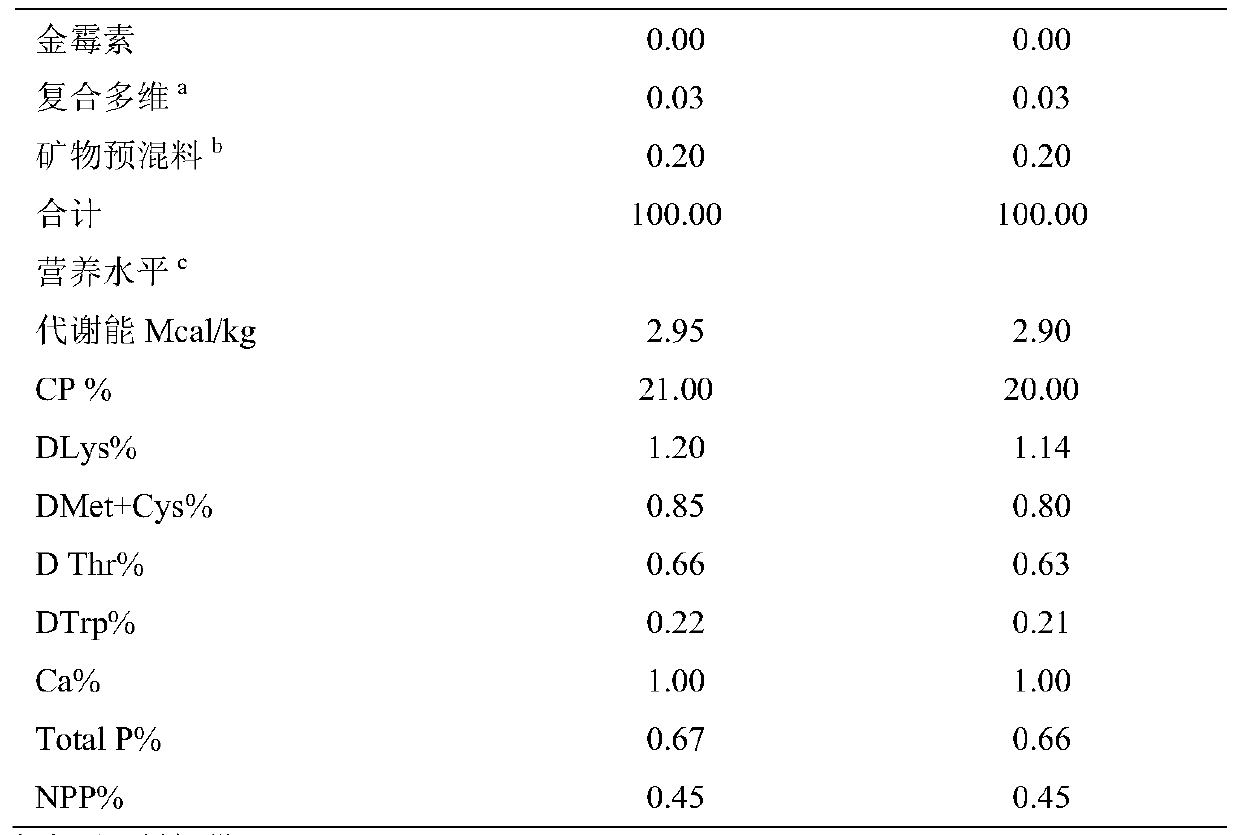Quercus variabilis/quercus acutissima cupule extract feed additive for broilers and application of quercus variabilis/quercus acutissima cupule extract feed additive for broilers
A technology of feed additives and extracts, applied in the field of feed additives for broiler rubber bowl extracts, to achieve the effects of promoting meat quality and immune organ development, simple extraction process, and large industrial application prospects
- Summary
- Abstract
- Description
- Claims
- Application Information
AI Technical Summary
Problems solved by technology
Method used
Image
Examples
Embodiment 1
[0018] Embodiment 1: the preparation of oak comb extract
[0019] Weigh 80kg of the raw material of the rubber bowl and place it in the extraction tank, add first-grade water at 60°C according to the ratio of solid to liquid 1:10, take an oil bath at 60°C-80°C, extract for 2 hours, repeat the extraction 3-4 times, and combine the extracts. According to the ratio of 0.1g / L, tannase was added and fermented for 12 hours. The fermented liquid was frozen and settled overnight, filtered, and the supernatant was concentrated under reduced pressure at 45°C to 1 / 4 of the original volume, and the concentrated liquid was freeze-dried to obtain 17.7kg of extract, the tested tannin content is 73.4%.
Embodiment 2
[0020] Embodiment 2: broiler breeding experiment
[0021] Select 648 healthy 1-day-old AA male broilers with similar body weight, and randomly divide them into 6 groups, with 6 repetitions in each group and 12 chickens in each repetition. Add rubber bowl extract feed additive (VT-1 group) in basal ration, set antibiotic (chlortetracycline) control group (addition amount 300g / t) and commercially available similar commodity tannin control group (addition amount 200g) at the same time / t). The experiment was carried out in an online flat raising mode, with free access to food and water. The initial temperature of the experiment was 35°C, and then decreased by 2-3°C every week until it dropped to 26°C. Other management measures such as light, ventilation and immunity are carried out according to the feeding management manual. The diet was formulated and pelleted according to NRC (1994) nutritional requirements of broiler chickens. The composition and nutritional level of the bas...
Embodiment 3
[0028] Embodiment 3: broiler breeding experiment
[0029] Select 648 healthy 1-day-old AA male broilers with similar body weight, and randomly divide them into 6 groups. Each group has 6 repetitions, and each repetition has 12 chickens. Add rubber bowl extract feed additive (VT-2 group) in basal ration, set antibiotic (chlortetracycline) control group (addition amount 300g / t) and commercially available similar commodity tannin control group (addition amount 200g) simultaneously / t). The breeding experiment was carried out as described in Example 2. Calculate the average daily gain (ADG) of each group at the age of 1-21 days, 22-42 days, and 1-42 days. During the whole test period, the feeding amount of chickens in each group was recorded, and the average daily feed intake (ADFI) of each group was calculated according to the age of 1-21 days, 22-42 days, and 1-42 days. Stage feed conversion ratio (FCR).
PUM
 Login to View More
Login to View More Abstract
Description
Claims
Application Information
 Login to View More
Login to View More - Generate Ideas
- Intellectual Property
- Life Sciences
- Materials
- Tech Scout
- Unparalleled Data Quality
- Higher Quality Content
- 60% Fewer Hallucinations
Browse by: Latest US Patents, China's latest patents, Technical Efficacy Thesaurus, Application Domain, Technology Topic, Popular Technical Reports.
© 2025 PatSnap. All rights reserved.Legal|Privacy policy|Modern Slavery Act Transparency Statement|Sitemap|About US| Contact US: help@patsnap.com



